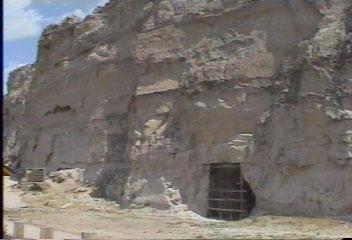
 |
Leaving Cheyenne, we headed northeast and wondered if we would end up in one of the storms that we saw brewing overhead. Our first stop was Register Cliff along the Platte River in eastern Wyoming. This spot was a common stop for travelers on the Oregon Trail. The sandstone cliff provided some shade, the river a source of water and trees provided wood. |
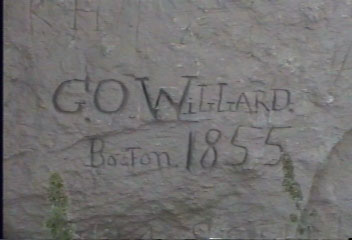
G.O. Willard Boston 1855 |
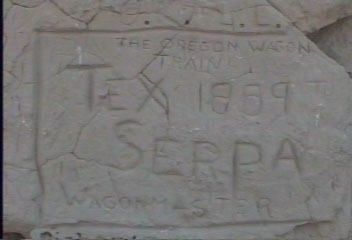
The Oregon Wagon Trail Tex Seppa 1889 Wagon Master |
| A portion of the cliff is protected by a fence. Although protected by law, much of the cliff continues to be a register and older names and dates are intermixed with those from later decades. | 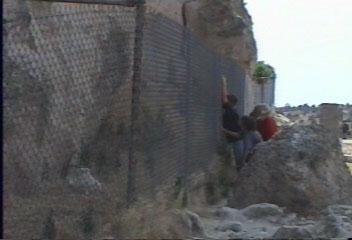 |
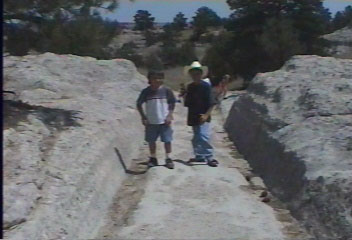 |
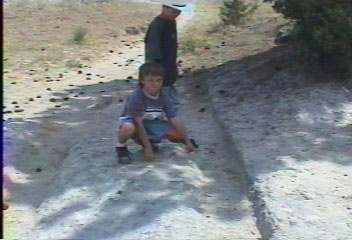 |
Our next stop, Fort Laramie. Many of the original buildings have been refurbished to their original condition. This is the Calvary barracks. Some buildings like the infantry barracks have nothing left but it's foundation.
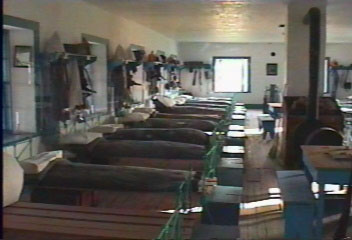 |
Many people wonder how we, the Nodlands, can live on
the road in a trailer. I wonder the same thing about these people
when I visit places like this. These people were in eastern Wyoming
in the middle of nowhere. Many days from a town and weeks away from
any major supply point. No electricity, no phone, no supermarket,
no TV, no air conditioner, no weather radio and no refrigerator to store
a cold beer or soda pop.
|
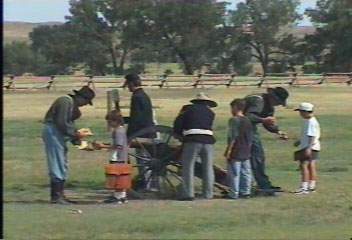 |
Since there was no target like a ship or a building, solid iron balls were not effective. Instead, there were iron balls with a second delayed charge inside that would burst like a grenade, or another that was much like a large shotgun shell. |
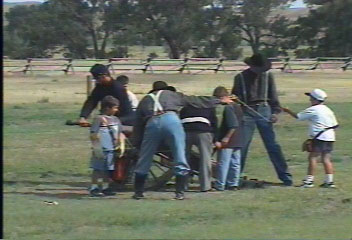 |
Mitch was recruited to the position of "Sergeant".
Max was the "Runner". The boys were each trained for their part of the team. Then they had a practice run. After that, they ran two timed drills. |
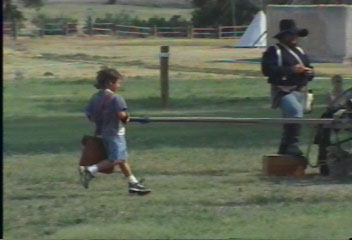 |
Sergeant Mitch would yell out the orders, First he would designate the type of round to use. Then he would yell, "Load one round." The Runner would go to the ammunition cart and ammunition man would place a round in the protective leather pouch. |
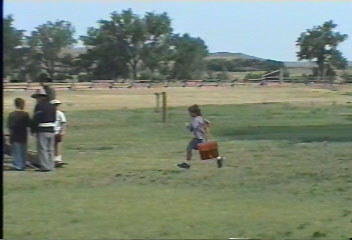 |
Then the runner would hurry back to the cannon. He would take the round out of the pouch and hold it directly in front of the cannon. |
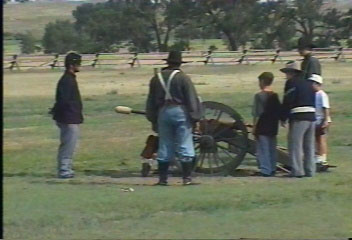 |
Next the packer would ram the round into the cannon. The other end, seen in this picture, looks like an oversized Q-tip and is used to swab the cannon clean. Then Sergeant Mitch would use a long needle in the firing hole to puncture the bag of gun powder that was just packed into the cannon. |
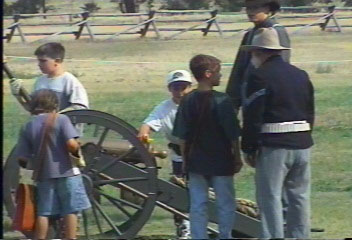 |
The boy in the white shirt would insert the charge into
the firing hole and step back holding a long string that is used to strike
the flint on the charge.
Sergeant Mitch would yell "Ready", all would step back and then "Fire", and the string was pulled. Too bad their round was made of grain instead of real
gun power. The boy's first time was 35 seconds. Their second
time was 24 seconds.
|
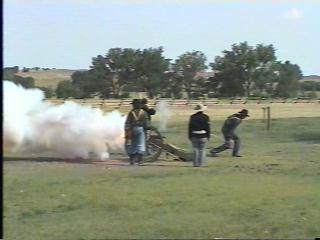
| That night we drove on to Scotts Bluff, Nebraska.
Scotts Bluff and Chimney Rock, 35 miles east, where two major landmarks on the Oregon Trail. These land forms marked the end of the hot dry often stormy plains and also concluded the first third of their journey west. It must have been a real joy to arrive here. Just think of how the excitement must have built as they watched the bluff approach for two or maybe three days. |
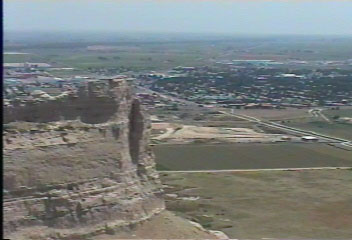 |
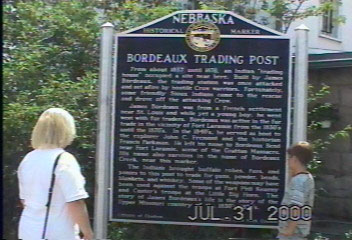 |
Further east we came upon the Bordeaux Trading Post, one of the first fur trapper's trading posts in the west. This is a small, private, out of the way museum with a very impressive collection. |
| Here I am standing outside the door of the actual trading post. If you're tired of the L.A. commute, this is the place for you. | 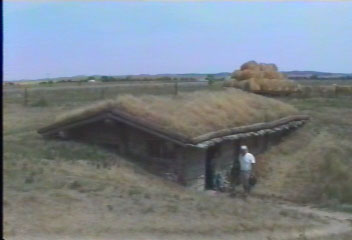 |
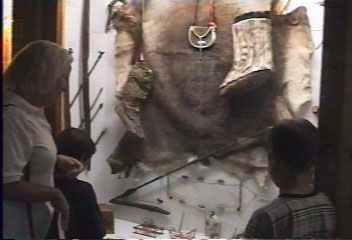 |
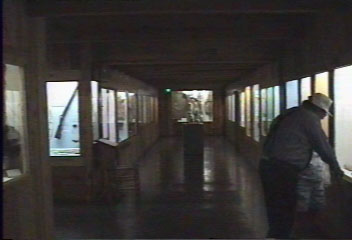 |
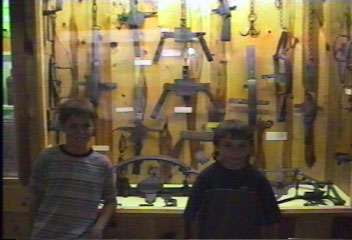 |
|
|
|
|
|
ã copyright Nodland 1999-2020